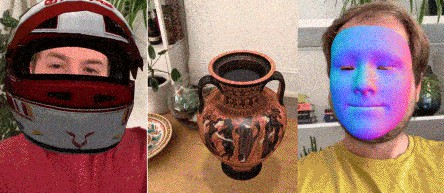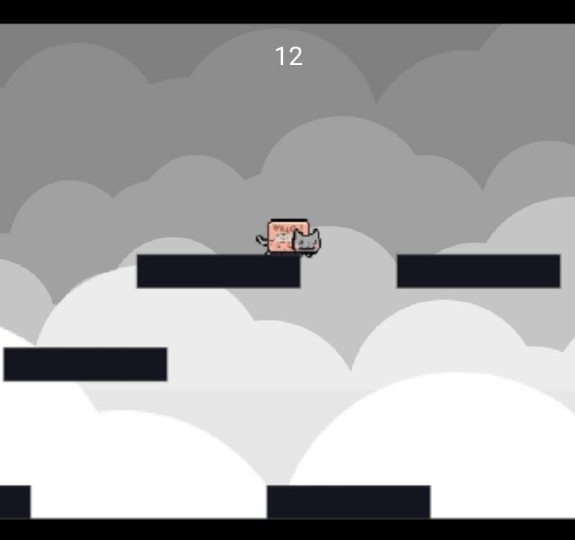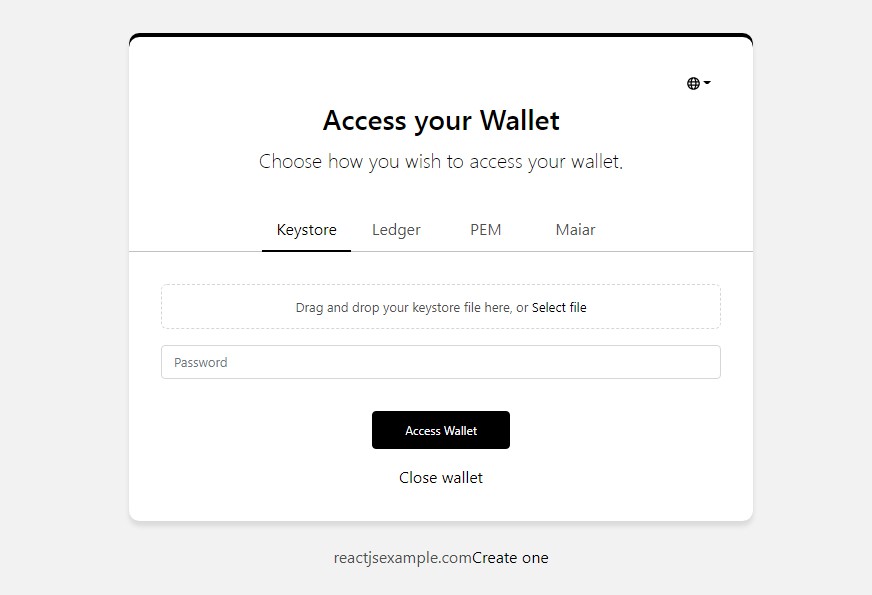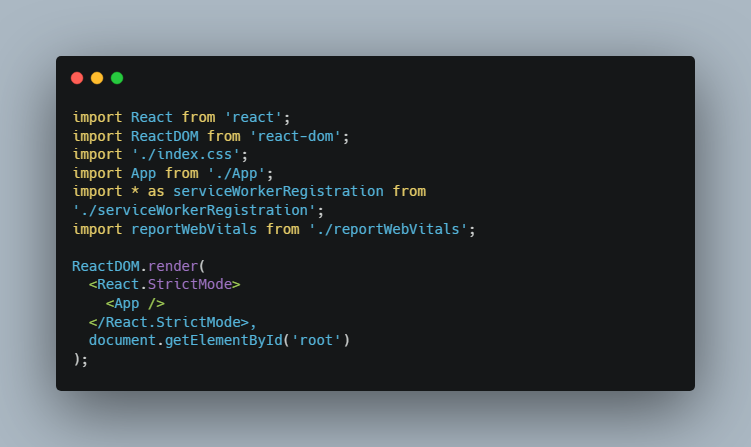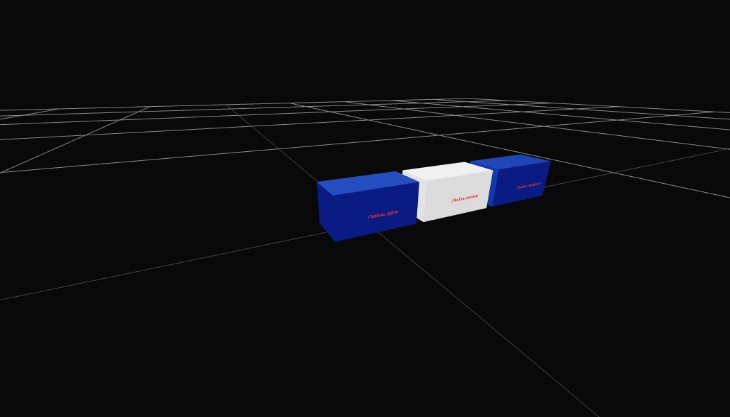Zappar for React Three Fiber
This library allows you use Zappar's best-in-class AR technology with content built using the 3D rendering platform React Three Fiber.
It provides high performance (30 frames-per-second) face, image and world tracking, in the browsers already installed on your users' mobile phones.

You may also be interested in:
- Zappar for A-Frame (website, NPM)
- Zappar for ThreeJS (website, NPM)
- Zappar for Unity (website)
- Zappar for JavaScript (website, NPM), if you'd like to build content with a different 3D rendering platform
- ZapWorks Studio (website), a full 3D development environment built for AR, VR and MR
Table Of Contents
Click to expand table of contents
- Zappar for React Three Fiber
- Table Of Contents
- Getting Started
- Starting Development
- Overview
- Local Preview and Testing
- Compatibility and Browser Support
- Publishing and Hosting Content
- Setting up the Canvas
- Setting up the Camera
- Advanced Usage
- Tracking
- Loading UI
- Usage with react-router-dom
- Integrating into an existing create-react-app project
- Links and Resources
Getting Started
Bootstrap Projects
You can get started super-quickly using one of our bootstrap projects. They contain the basics of an AR experience for the different tracking types - no more, no less.
GitHub
Check out these repositories that contain webpack and babel setups, which are optimized for development and deployment:
| Tracking Type | JavaScript | TypeScript |
|---|---|---|
| Image Tracking | GitHub (JSX) | GitHub (TSX) |
| Face Tracking | GitHub (JSX) | GitHub (TSX) |
| Instant Tracking | GitHub (JSX) | GitHub (TSX) |
create-react-app
Alternatively,you may get started via npx create-react-app:
npx create-react-app uar-app --template @zappar/r3f-face-tracking-typescript
Click to expand available templates
@zappar/r3f-face-tracking@zappar/r3f-face-tracking-typescript@zappar/r3f-image-tracking@zappar/r3f-image-tracking-typescript@zappar/r3f-instant-tracking@zappar/r3f-instant-tracking-typescript
Example Projects
There's a repository of example projects for your delectation over here:
Starting Development
You can use this library by installing from NPM for use in a webpack project.
NPM
Run the following NPM command inside your project directory:
npm install --save @zappar/zappar-react-three-fiber
Then import the library into your JavaScript or TypeScript files:
import { ZapparCamera /* ... */ } from "@zappar/zappar-react-three-fiber";
The final step is to add this necessary entry to your webpack rules:
module.exports = {
//...
module: {
rules: [
//...
{
test: /zcv\.wasm$/,
type: "javascript/auto",
loader: "file-loader",
},
//...
],
},
};
Overview
You can integrate the Zappar library with an existing React Three Fiber app. A typical project may look like this:
import { render } from "react-dom";
import React from "react";
import {
ZapparCamera,
ImageTracker,
ZapparCanvas,
} from "@zappar/zappar-react-three-fiber";
const App = () => {
// Use Webpack to load in target file
const targetFile = "example-tracking-image.zpt";
.default;
return (
<ZapparCanvas>
{/* Setup Zappar Camera*/}
<ZapparCamera />
{/* Setup Image Tracker, passing our target file */}
<ImageTracker targetImage={targetFile}>
{/* Create a normal pink sphere to be tracked to the target */}
<mesh>
<sphereBufferGeometry />
<meshStandardMaterial color="hotpink" />
</mesh>
</ImageTracker>
{/* Normal directional light */}
<directionalLight />
</ZapparCanvas>
);
}
render(<App />, document.getElementById("root"));
The remainder of this document goes into more detail about each of the component elements of the example above.
Local Preview and Testing
For testing, you'll want to launch the project locally, without hosting it.
Due to browser restrictions surrounding use of the camera, you must use HTTPS to view or preview your site, even if doing so locally from your computer. If you're using webpack, consider using webpack-dev-server which has an https option to enable this.
Alternatively you can use the ZapWorks command-line tool to serve a folder over HTTPS for access on your local computer, like this:
zapworks serve .
The command also lets you serve the folder for access by other devices on your local network, like this:
zapworks serve . --lan
Compatibility and Browser Support
This library works well on the browsers that enjoy the vast majority of mobile market-share. That said, there are a number of web browsers available across the mobile and desktop device landscape.
Best support:
- Safari for iOS (version 11.3 and later)
- Chrome for Android (versions from at least the last year)
Functional but not our primary support target (support quality):
- Most Webkit/Blink-based web browsers for Android, including Brave (good)
- Most third-party web browsers for iOS from iOS 14.3 and later (good)
- iOS in-app web views implemented with SFSafariViewController (good)
- iOS in-app web views implemented with WKWebView from iOS 14.3 (good)
- Firefox for Android (good, however performance may be lower than other browsers)
- Chrome for Mac/Windows (*)
- Firefox for Mac/Windows (*)
- Safari for Mac (*)
Known to not work:
- iOS in-app web views implemented with WKWebView prior to iOS 14.3 - this iOS technology do not support camera access at all and thus we’re unable to support it. Apple has rectified this issue in iOS 14.3.
- iOS in-app web views implemented with the deprecated UIWebView component - this iOS technology do not support camera access at all and thus we’re unable to support it.
- Non-Safari web browsers on iOS, including Chrome, Firefox and Brave, before iOS 14.3 - these browsers use WKWebView due to App Store restrictions and thus do not support camera access.
* Browsers without motion sensor access (e.g desktop browsers) don't support instant world tracking or attitude-based camera poses.
Detecting Browser Compatibility
To make it easy to detect if your page is running in a browser that's not supported, we've provided the BrowserCompatibility component.
<>
<BrowserCompatibility />
<Canvas>
{/* Content */}
</Canvas>
</>
The BrowserCompatibility default fallback shows a full-page dialog that informs the user they're using an unsupported browser, and provides a button to 'copy' the current page URL so they can 'paste' it into the address bar of a compatible alternative.
You may also provide a custom fallback (ReactElement) UI to be displayed.
<BrowserCompatibility fallback={<div>Sorry!</div>} />
For more custom implementations, consider using browserIncompatible function.
const incompatible = browserIncompatible(); // true / false
Publishing and Hosting Content
Once you've built your site, you have a number of options for hosting it. These include, hosting with ZapWorks and self-hosting. Head over to the ZapWorks Publishing and Hosting article to learn more about these options.
Licensing
This wrapper library is MIT licensed, but relies on our proprietary computer vision library, @zappar/zappar-cv, for which you must maintain an activate subscription at ZapWorks. To learn more about licensing, click here.
The source code for this wrapper library is available freely for your viewing pleasure over at GitHub:
https://github.com/zappar-xr/zappar-react-three-fiber/
Setting up the Canvas
The first step when developing a React Three Fibre UAR project is replace any existing Canvas you have in your scene with the ZapparCanvas.
import { ZapparCanvas /* ... */ } from "@zappar/zappar-react-three-fiber";
<ZapparCanvas>{/** YOUR CONTENT HERE **/}</ZapparCanvas>;
You may alternatively use the default react-three-fiber Canvas component, with colorManagement toggled off.
<Canvas colorManagement={false}>{/** YOUR CONTENT HERE **/}</Canvas>;
When using @zappar/webgl-snapshot to take screenshots, construct the canvas with drawing buffer preservation enabled:
<ZapparCanvas gl={{ preserveDrawingBuffer: true }}>
or
<Canvas
colorManagement={false}
gl={{ preserveDrawingBuffer: true }
>
Setting up the Camera
Add or replace any existing camera you have in your scene with the ZapparCamera component:
import { ZapparCamera /* ... */ } from "@zappar/zappar-react-three-fiber";
// ...
return (
<ZapparCanvas>
<ZapparCamera/>
</ZapparCanvas>
);
You don't need to change the position or rotation of the camera yourself - the Zappar library will do this for you, automatically.
Advanced Usage
Custom Video Device
Custom video device IDs can be provided as options passed into ZapparCamera component:
<ZapparCamera
sources={{
userCamera:
"csO9c0YpAf274OuCPUA53CNE0YHlIr2yXCi+SqfBZZ8=",
rearCamera:
"RKxXByjnabbADGQNNZqLVLdmXlS0YkETYCIbg+XxnvM=",
}}
/>
First Frame
Use onFirstFrame callback prop to detect when the first frame has been processed:
<ZapparCamera
onFirstFrame={() => {
console.log("first frame");
}}
/>
Setting the default camera
When the camera component is mounted, it sets itself as the scene's main camera with render priority of 1. You may change this behavior with the following props:
<ZapparCamera
makeDefault={false} // default: true
renderPriority={0} // default: 1
/>
To set the camera as your main scene camera yourself, use useThree:
const set = useThree(state => state.set)
const cameraRef = useRef()
useLayoutEffect(() => {
set(() => ({ camera: cameraRef.current }))
}, [])
// ...
<ZapparCamera makeDefault={false} ref={ref}/>
// ...
User Facing Camera
Some experiences, e.g. face tracked experiences, require the use of the user-facing camera on the device. To activate the user-facing camera, provide the userFacing prop to the ZapparCamera component:
<ZapparCamera userFacing />
Mirroring the Camera
Users expect user-facing cameras to be shown mirrored, so by default the ZapparCamera will mirror the camera view for the user-facing camera.
Configure this behavior with the following option:
<ZapparCamera userCameraMirrorMode="poses" />
The values you can pass to userCameraMirrorMode are:
poses: this option mirrors the camera view and makes sure your content aligns correctly with what you're tracking on screen. Your content itself is not mirrored - so text, for example, is readable. This option is the default.css: this option mirrors the entire canvas. With this mode selected, both the camera and your content appear mirrored.none: no mirroring of content or camera view is performed
There's also a rearCameraMirrorMode prop that takes the same values should you want to mirror the rear-facing camera. The default rearCameraMirrorMode is none.
Realtime Camera-based Reflections
The SDK provides an automatically generated environment map that's useful if you're using materials that support reflections (e.g. MeshStandardMaterial, MeshPhysicalMaterial). The map uses the camera feed to create an approximate environment that can add some realism to your scene.
To apply the map to your scene, simply pass environmentMap prop to the ZapparCamera component:
<ZapparCamera environmentMap />
Alternatively, you may get the texture to attach to specific object materials by passing in a callback function to useEnvironmentMap:
const App = () => {
const [envMap, setEnvMap] = useState<THREE.Texture>();
return (
<ZapparCanvas>
<ZapparCamera useEnvironmentMap={setEnvMap} />
<mesh position={[0, 0, -5]}>
<sphereBufferGeometry />
<meshStandardMaterial metalness={1} roughness={0} envMap={envMap} />
</mesh>
<directionalLight position={[2.5, 8, 5]} intensity={1.5} />
</ZapparCanvas>
);
};
Camera Pose
The Zappar library provides multiple modes for the camera to move around in the scene. You can set this mode with the poseMode prop of the ZapparCamera component. There are the following options:
default: in this mode the camera stays at the origin of the scene, pointing down the negative Z axis. Any tracked groups will move around in your scene as the user moves the physical camera and real-world tracked objects.attitude: the camera stays at the origin of the scene, but rotates as the user rotates the physical device. When the Zappar library initializes, the negative Z axis of world space points forward in front of the user.anchor-origin: the origin of the scene is the center of the group specified by the camera'sposeAnchorOriginprop. In this case the camera moves and rotates in world space around the group at the origin.
The correct choice of camera pose will depend on your given use case and content. Here are some examples you might like to consider when choosing which is best for you:
- To have a light that always shines down from above the user, regardless of the angle of the device or anchors, use
attitudeand place a light shining down the negative Y axis in world space. - In an application with a physics simulation of stacked blocks, and with gravity pointing down the negative Y axis of world space, using
anchor-originwould allow the blocks to rest on a tracked image regardless of how the image is held by the user, while usingattitudewould allow the user to tip the blocks off the image by tilting it.
Tracking
The Zappar library offers three types of tracking for you to use to build augmented reality experiences:
- Image Tracking can detect and track a flat image in 3D space. This is great for building content that's augmented onto business cards, posters, magazine pages, etc.
- Face Tracking detects and tracks the user's face. You can attach 3D objects to the face itself, or render a 3D mesh that's fit to (and deforms with) the face as the user moves and changes their expression. You could build face-filter experiences to allow users to try on different virtual sunglasses, for example, or to simulate face paint.
- Instant World Tracking lets you tracking 3D content to a point chosen by the user in the room or immediate environment around them. With this tracking type you could build a 3D model viewer that lets users walk around to view the model from different angles, or an experience that places an animated character in their room.
Importing trackers from the package:
import {
InstantTracker,
ImageTracker,
FaceTracker,
} from "@zappar/zappar-react-three-fiber";
Image Tracking
To track content from a flat image in the camera view, use the ImageTracker component:
<ImageTracker targetImage={targetFile} >
{/*PLACE CONTENT TO APPEAR ON THE IMAGE HERE*/}
</ImageTracker>
The group provides a coordinate system that has its origin at the center of the image, with positive X axis to the right, the positive Y axis towards the top and the positive Z axis coming up out of the plane of the image. The scale of the coordinate system is such that a Y value of +1 corresponds to the top of the image, and a Y value of -1 corresponds to the bottom of the image. The X axis positions of the left and right edges of the target image therefore depend on the aspect ratio of the image.
Target File
ImageTrackers use a special 'target file' that's been generated from the source image you'd like to track. You can generate them using the ZapWorks command-line utility like this:
zapworks train myImage.png
The resulting file can then be passed as a targetFile prop to be loaded:
const App = () => {
const targetFile = 'target.zpt';
return (
<ZapparCanvas>
<ZapparCamera userCameraMirrorMode="css" />
<ImageTracker targetImage={targetFile} >
{/*PLACE CONTENT TO APPEAR ON THE IMAGE HERE*/}
</ImageTracker>
</ZapparCanvas>
);
}
Events
The ImageTracker component will emit the following events on the element it's attached to:
onVisible- emitted when the image appears in the camera viewonNotVisible- emitted when the image is no longer visible in the camera viewonNewAnchor- emitted when a a non-previously seen before anchor appears in the camera view.
Here's an example of using these events:
<ZapparCanvas>
<ZapparCamera />
<ImageTracker
onVisible={(anchor) => console.log(`Visible ${anchor.id}`)}
onNotVisible={(anchor) => console.log(`Not visible ${anchor.id}`)}
onNewAnchor={(anchor) => console.log(`New anchor ${anchor.id}`)}
targetImage={targetFile}
>
{/*PLACE CONTENT TO APPEAR ON THE IMAGE HERE*/}
</ImageTracker>
</ZapparCanvas>
Face Tracking
To place content on or around a user's face, create a new FaceTracker component:
<ZapparCamera/>
<FaceTracker >
{/*PLACE CONTENT TO APPEAR ON THE FACE HERE*/}
</FaceTracker>
The group provides a coordinate system that has its origin at the center of the head, with positive X axis to the right, the positive Y axis towards the top and the positive Z axis coming forward out of the user's head.
Note that users typically expect to see a mirrored view of any user-facing camera feed. Please see the section on mirroring the camera view earlier in this document.
Events
The FaceTracker component will emit the following events on the element it's attached to:
onVisible- emitted when the face appears in the camera viewonNotVisible- emitted when the face is no longer visible in the camera view
Here's an example of using these events:
<ZapparCamera />
<FaceTracker
onNotVisible={(anchor) => console.log(`Not visible ${anchor.id}`)}
onVisible={(anchor) => console.log(`Visible ${anchor.id}`)}
>
{/*PLACE CONTENT TO APPEAR ON THE FACE HERE*/}
</FaceTracker>
Face Landmarks
In addition to tracking the center of the head, you can use Landmark to track content from various points on the user's face. These landmarks will remain accurate, even as the user's expression changes.
To track a landmark, construct a new Landmark component, passing your camera, face tracker group, and the name of the landmark you'd like to track as props:
const App = () => {
return (
<ZapparCanvas>
<ZapparCamera />
<FaceTracker />
<FaceLandmark
target="nose-bridge"
>
{/*PLACE CONTENT TO APPEAR ON THE NOSE BRIDGE HERE*/}
</FaceLandmark>
<directionalLight />
</ZapparCanvas>
);
}
The following landmarks are available: eye-left, eye-right, ear-left, ear-right, nose-bridge, nose-tip, nose-base, lip-top, lip-bottom, mouth-center, chin, eyebrow-left, and eyebrow-right. Note that 'left' and 'right' here are from the user's perspective.
Face Mesh
In addition to tracking the center of the face using FaceTracker, the Zappar library provides a number of meshes that will fit to the face/head and deform as the user's expression changes. These can be used to apply a texture to the user's skin, much like face paint, or to mask out the back of 3D models so the user's head is not occluded where it shouldn't be.
To use a face mesh, create a child mesh component, attaching FaceBufferGeometry within your FaceTracker component, like this:
import { FaceBufferGeometry /* ... */ } from "@zappar/zappar-react-three-fiber";
// ...
const App = () => {
const faceTrackerGroup = useRef();
return (
<ZapparCanvas>
<ZapparCamera />
<FaceTracker ref={faceTrackerGroup}>
<mesh>
<FaceBufferGeometry trackerGroup={faceTrackerGroup} />
</mesh>
</FaceTracker>
<directionalLight />
</ZapparCanvas>
);
};
At this time there are two meshes included with the library. The default mesh covers the user's face, from the chin at the bottom to the forehead, and from the sideburns on each side. There are optional parameters that determine if the mouth and eyes are filled or not:
<FaceBufferGeometry
fillEyeLeft
fillEyeRight
fillMouth
fillNeck
/>
The full head simplified mesh covers the whole of the user's head, including some neck. It's ideal for drawing into the depth buffer in order to mask out the back of 3D models placed on the user's head (see Head Masking below). There are optional parameters that determine if the mouth, eyes and neck are filled or not:
<FaceBufferGeometry fullHead />
Head Masking
If you're placing a 3D model around the user's head, such as a helmet, it's important to make sure the camera view of the user's real face is not hidden by the back of the model. To achieve this, the library provides HeadMaskMesh. It's an entity that fits the user's head and fills the depth buffer, ensuring that the camera image shows instead of any 3D elements behind it in the scene.
To use it, add the entity into your HeadMaskMesh entity, before any other 3D content:
import { HeadMaskMesh /* ... */ } from "@zappar/zappar-react-three-fiber";
// ...
<ZapparCamera />
<FaceTracker>
<HeadMaskMesh />
{/*OTHER 3D CONTENT GOES HERE*/}
</FaceTracker>
Instant World Tracking
To track content from a point on a surface in front of the user, use the InstantTracker component:
<InstantTracker placementMode >
{/*PLACE CONTENT TO APPEAR IN THE WORLD HERE*/}
</InstantTracker>
The group provides a coordinate system that has its origin at the point that's been set, with the positive Y coordinate pointing up out of the surface, and the X and Z coordinates in the plane of the surface.
You can use the placementMode prop to let the user choose a location for their content by moving their camera around the room. While the prop is set, the InstantTracker's position will be updated every frame to be in front of the user at [0, 0, -5] relative to the camera. Once the prop is removed the tracker will keep the content anchored at that position in the user's environment, rather than directly in front of the camera. You can customize the camera-relative position that's set during placement mode using the placementCameraOffset prop.
In typical usage, the tracker starts with placementMode set, and an on-screen UI element enables to the user to 'place' and 'pick-up' the content by toggling that prop, like this:
const [placementMode, setPlacementMode] = useState(true);
return (
<>
<ZapparCanvas>
<ZapparCamera />
<InstantTracker placementMode={placementMode} >
<mesh>
<sphereBufferGeometry />
<meshStandardMaterial color="hotpink" />
</mesh>
</InstantTracker>
<directionalLight />
</ZapparCanvas>
<div
id="zappar-placement-ui"
onClick={() => {
setPlacementMode((currentPlacementMode) => !currentPlacementMode);
}}
>
Tap here to
{placementMode ? " place " : " pick up "}
the object
</div>
</>
);
Default Placement UI
For your convenience, a default placement UI is available. This can be used by simply passing in a placementUI prop with values placement-only or toggle.
A simple experience which uses placementUI may look like this:
export default function App() {
return (
<ZapparCanvas>
<ZapparCamera />
<InstantTracker
placementUI="placement-only"
placementCameraOffset={[0, 0, -10]}
>
<mesh>
<sphereBufferGeometry />
<meshStandardMaterial color="hotpink" />
</mesh>
</InstantTracker>
<directionalLight position={[2.5, 8, 5]} intensity={1.5} />
</ZapparCanvas>
);
}
Loading UI
For your convenience, this package includes a Loader component that you can use to display a progress bar while your experience loads (should you wish to). It takes over the global instance of THREE's LoadingManager. The <Loader /> is used by adding it to the canvas like this:
import {Loader, /*...*/ } from '@zappar/zappar-react-three-fiber'
// ....
return (
<ZapparCanvas>
<ZapparCamera rearCameraMirrorMode="css" />
<FaceTracker>
<Suspense fallback={null}>
<HeadMaskMesh />
<Model />
</Suspense>
</FaceTracker>
<directionalLight />
<Loader />
</ZapparCanvas>
)
The Loader will automatically handle the showing and hiding of the screen during the loading process.
Usage with react-router-dom
To ensure WebGL context is updated as routes are switched, a pipeline needs to be used:
import {
ZapparCanvas,
ZapparCamera,
FaceTracker,
Pipeline
} from "@zappar/zappar-react-three-fiber";
const App = () => {
const pipeline = new Pipeline();
return (
<ZapparCanvas>
<ZapparCamera pipeline={pipeline} />
<FaceTracker pipeline={pipeline}>
{/* PLACE CONTENT HERE*/}
</FaceTracker>
<directionalLight/>
</ZapparCanvas>
);
};
Note that removing and adding a canvas element is a relatively costly process which should be avoided, if possible.
Integrating into an existing create-react-app project
You will need to add react-app-rewired to your project:
https://github.com/timarney/react-app-rewired
Then create a config-overrides.js in the root of your project.
module.exports = {
webpack: function (config, env) {
config.module.rules = config.module.rules.map(rule => {
if (rule.oneOf instanceof Array) {
rule.oneOf[rule.oneOf.length - 1].exclude = [/\.(js|mjs|zbin|jsx|ts|tsx)$/, /\.html$/, /\.json$/];
return {
...rule,
oneOf: [{
test: /zcv\.wasm$/,
type: "javascript/auto",
loader: "file-loader",
options: {
outputPath: 'static/js',
publicPath: '.',
name: '[name].[ext]',
},
},
...rule.oneOf
]
};
}
return rule;
});
config.resolve.extensions.push(".wasm")
return config;
},
jest: function (config) {
return config;
},
devServer: function (configFunction) {
return function (proxy, allowedHost) {
const config = configFunction(proxy, allowedHost);
return config;
};
},
paths: function (paths, env) {
return paths;
},
}
You will also need to serve the dev server using https, refer to create-react-app and react-app rewired documentation for instructions.
